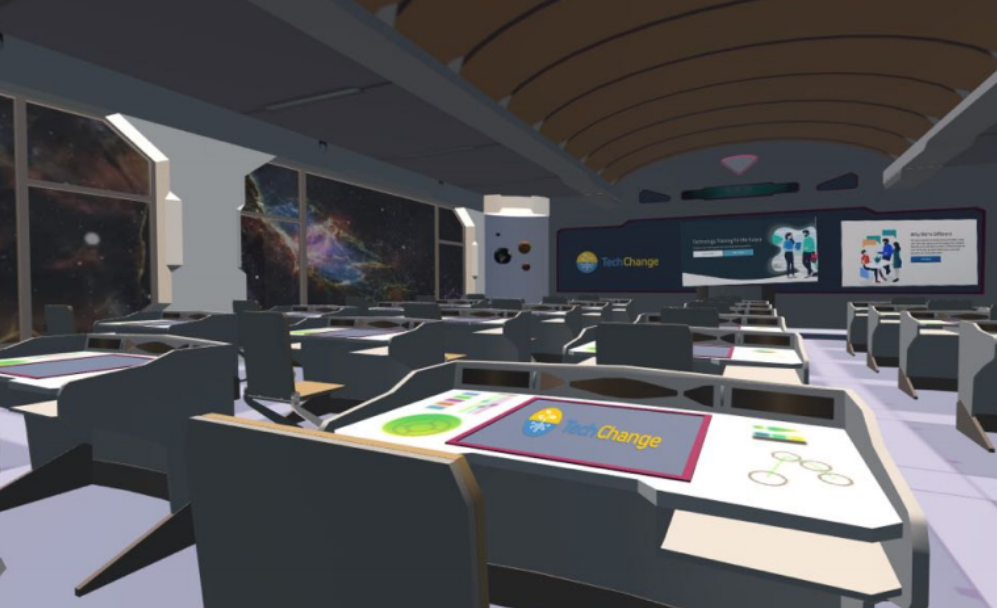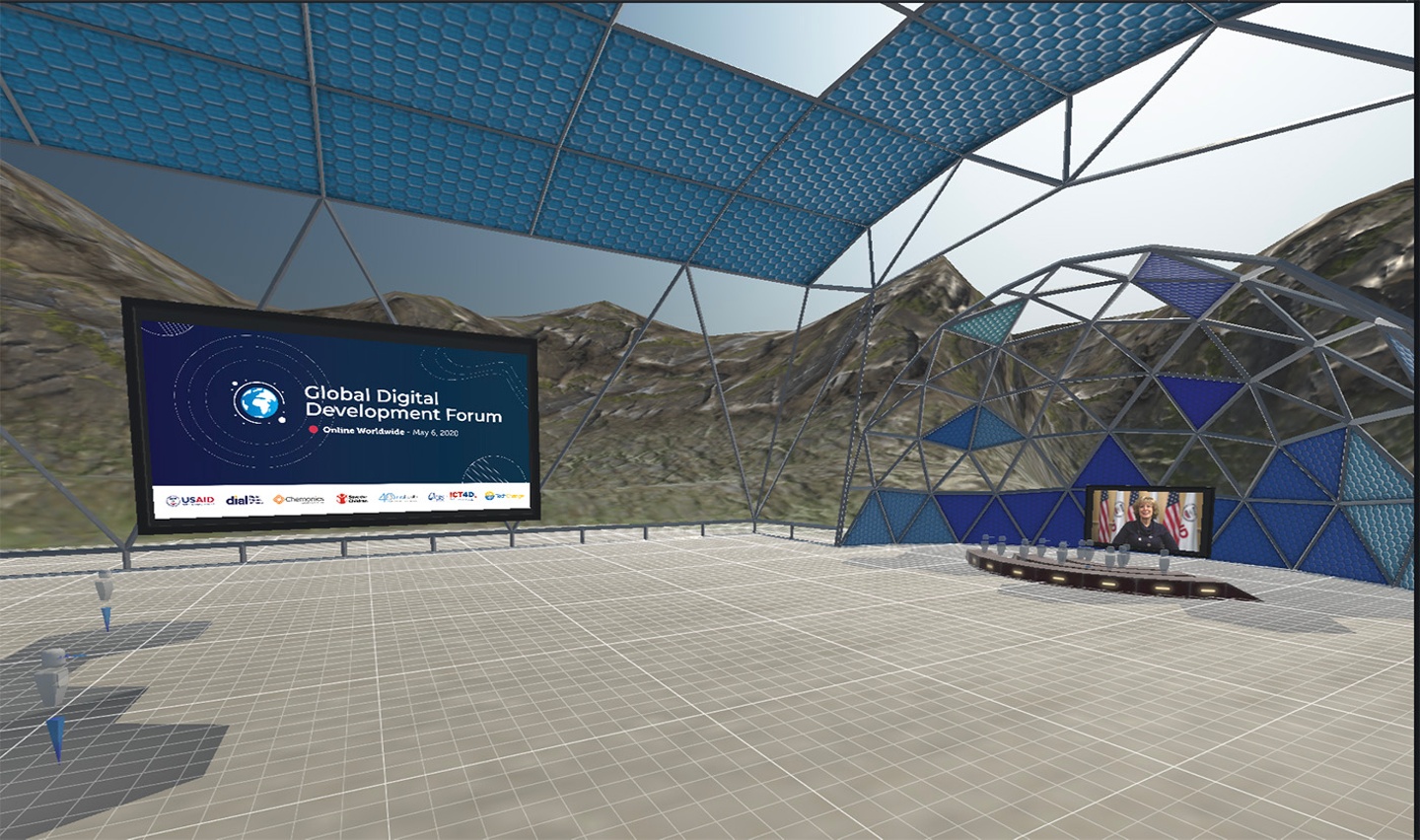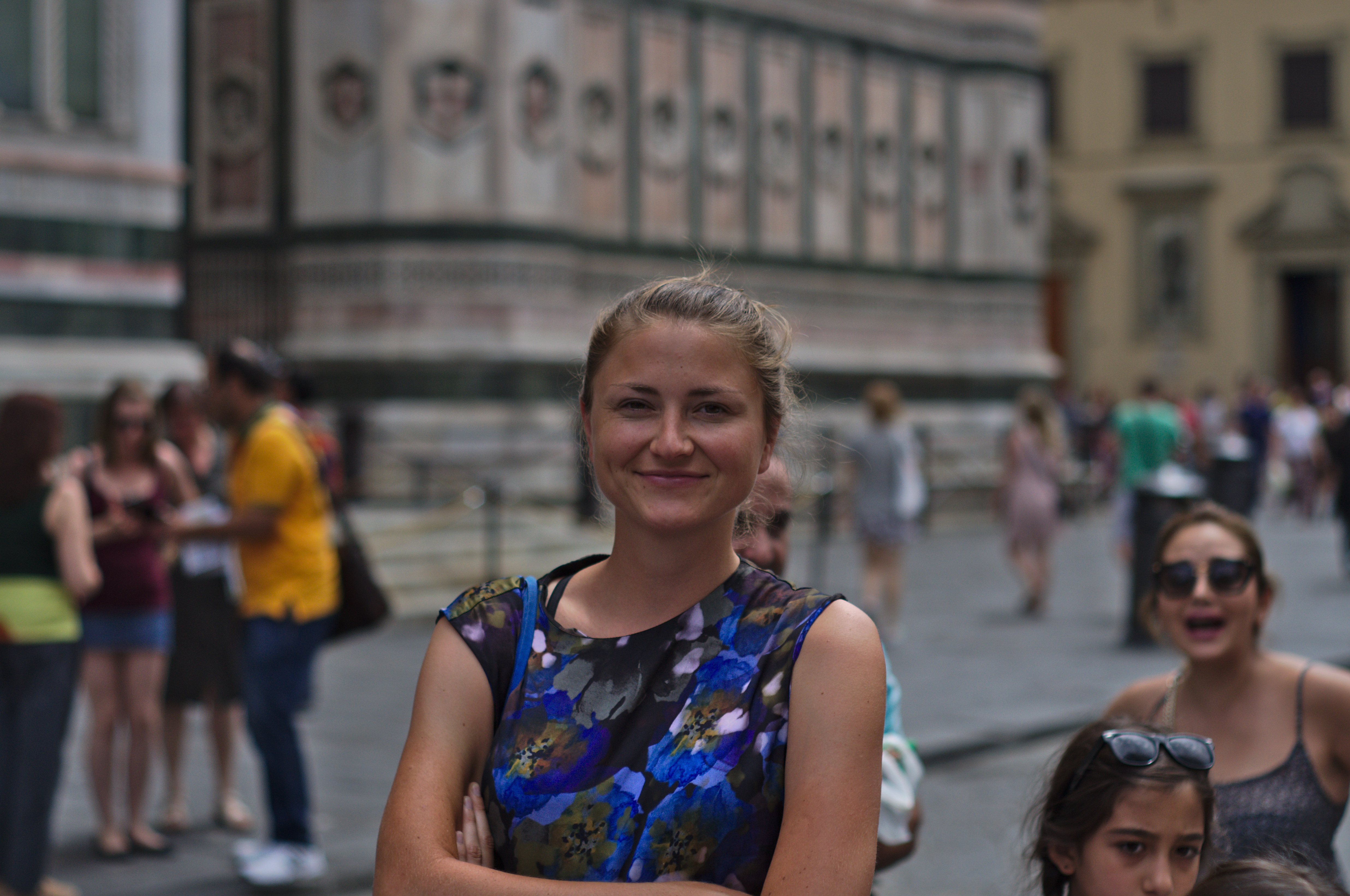Thanks to the ongoing pandemic, we are spending our work and social lives on video chat. And all evidence (and experiences) show that being on video call is exhausting. So we built our own virtual world using Mozilla Hubs for the Global Digital Development Forum.
Video conferencing solutions like Zoom are designed to solve business meeting challenges, but when applied to other use cases such as informal networking, the consequence is that every social gathering can start to feel like a formal meeting — even with fun and zany backgrounds. Some great events have created “informal happy hour” sections (including a recent event by Tech4Dem, which followed a formal USAID presentation with informal breakouts and a shared activity), but there’s only so much that solutions like Zoom can be repurposed into critical professional functions at conferences — like networking.
But there are increasing numbers of options for leveraging virtual worlds to go beyond planned video meetings. And there are a range of options, from the 12.3 million participants in Travis Scott’s Fortnite concert to more modest 8-bit solutions like Online Town, where multiple conversations can happen in parallel — just as they would when sharing a space in real life.
One promising option for virtual conferences is Mozilla Hubs, a “VR chatroom designed for every headset and browser, but it is also an open source project that explores how communication in mixed reality can come to life.” Most interestingly, we were able to not only use a world that was created previously, but also able to build a custom format specific for this global event.
So we built a shared space to experience the event, and network. It was intended to be a proof of concept (Register for GDDF to find the Link), but ended up recreating experiences that I had been craving for months.
- Overhearing Other Conversations. Since you are speaking in a virtual world, groups have to gather near one another to hear a conversation. That means at any given moment you can hear snippets of fascinating conversations, which you are welcome to join at any point and speak up as well.
- Leaving Conversations. Finally, an option other than forcing yourself through an unpleasant video conversation. If you want to join a different circle, you can just walk over. No awkward transitions, just pop on over.
- Randomness in Contacts and Introductions. Since you can join conversations and find friends, there is a true level of randomness but also vouched-for connections in networking. If your friend is having a good chat and you pop by, they can introduce you.
In closing, this was supposed to simulate a conference environment, but really what we recreated may have been more useful — the hallway or happy hour at the conference.
What’s next? We’d love to explore moving this to a classroom space, to try to recreate being physically present as close as we can to reality.



